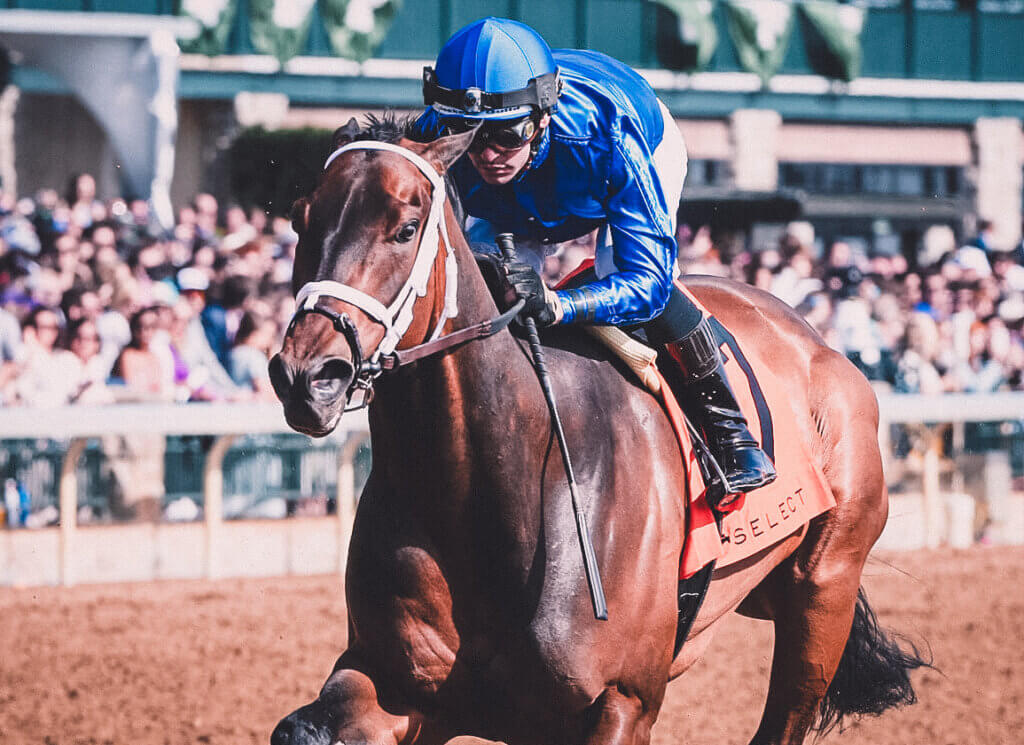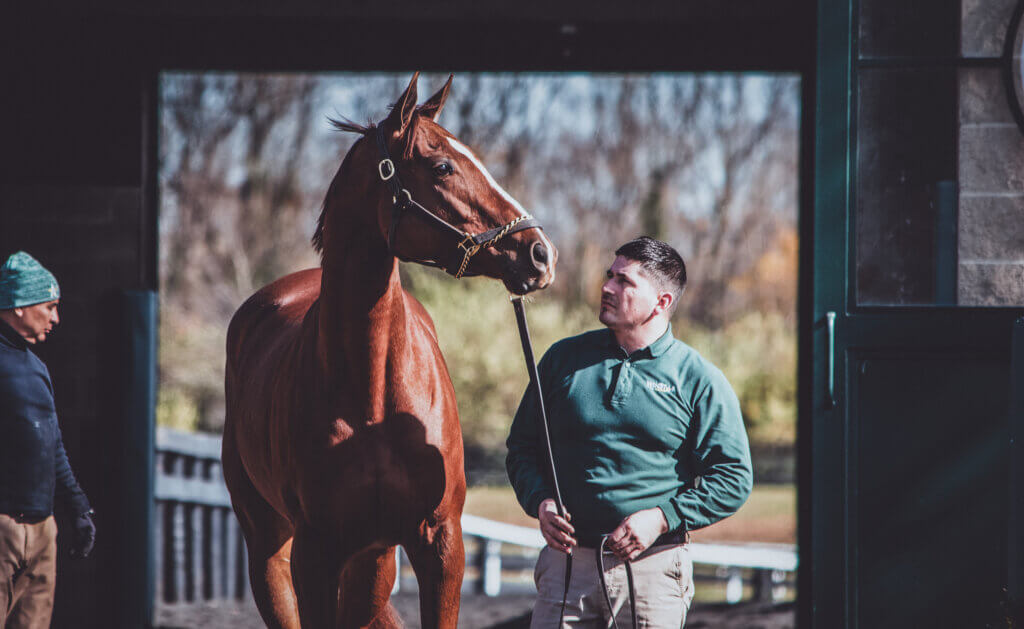One of the main arguments against horse racing is the use of whips. It is a contentious issue with an emotional undertone; however, before firmly advocating for or against the use of whips, it is crucial to delve into the various factors at play.
What is a Racing Whip?
There is one style of whip permitted in horse racing, and they must adhere to a tight specification – you can see the exact specification permitted here.
All whips are inspected by the Safety Officer to ensure they comply with HISA regulations and Stewards watch each jockey in every race to ensure they use the whip safely and appropriately.
All riding crops must have a soft-padded shaft with a smooth foam cylinder attachment. Specifications include a maximum weight of 8 ounces, maximum length of 30 inches, minimum shaft diameter of three-eighths of one inch, and a smooth shaft with no protrusions. There are currently several approved manufacturers, and whilst they are all made slightly differently, they look broadly the same.
The Evolution of the Whip
Historically, whips were made longer, more flexible and with harder, leather ends. They could easily mark a horse and could be used without any limitation. Rightly, the old type of whip has been deemed unsuitable for modern racing, while its use and purpose has been majorly reformed.
Today’s whips are designed not to inflict pain but to make a ‘popping’ sound on impact with the horse’s rump.
Today’s whips are designed not to inflict pain but to make a ‘popping’ sound on impact with the rump (the large body of muscles that powers the horse’s hind legs). If you stand near the finish of a race, you can hear these ‘pops’ as jockeys encourage their mounts to give every effort.
Apart from the rules which govern manufacturing, there are also strict rules around their use. In American horse racing, whip use is permitted but has certain restrictions to ensure the safety and well-being of the horses.
New rules and penalties introduced by HISA which impose uniform limits on use of the whip, giving stewards the power to withhold prize money from both jockeys and owners, have had significant success since their introduction in the US.
The new rule book restricts whip use to six times during a race and no more than twice in succession, while riders cannot raise their wrists above their helmets prior to striking a horse, nor may they hit the horse anywhere other than the shoulder or hindquarters.
Under HISA the rules are uniform, however, not every state has, as yet, signed onto HISA. Given the current system, where each state sets and enforces its own rules, even similar rules often are interpreted and enforced differently.
Jockey Safety
Encouragement aside, the most important reason a jockey carries a whip is safety. Horses are animals that can be spooked or distracted, even when traveling at top speed. This can endanger the horse itself, the jockey, and the other horses and jockeys around them.
A horse veering violently or suddenly off course can suffer and cause serious injury, so jockeys can use their whips by slapping the horse down the shoulder to bring their attention back to the jockey and keep control over the horse.
Again, this isn’t done to inflict pain, but rather to create a sound and turn the horse’s attention back to the rider. Since a jockey doesn’t have the use of leg aids to apply pressure on a horse’s side or girth, the whip can assist to change position if required in an emergency by waving it in the direction of the horse’s vision.

When it goes wrong…
As in all sports, rules can be broken from time to time, and given jockeys operate in the heat of competition – racing is no exception. The whip rules are set nationally by the state bodies and the penalties also differ in each state but overuse, or misuse of the whip will result in fines and/or suspensions for the jockey.
We know what you’re thinking – if a jockey is at the business end of the biggest race of their career, why wouldn’t they get carried away? After all, there’s a lot of prizemoney and prestige at stake. Just like NFL footballers in the Super Bowl, stewards warn the jockeys that transgressing the rules on the biggest days will result in much heftier fines than usual. The most severe penalties include a hefty fine and a one year suspension.
What is the purpose of suspending a jockey from riding in race meetings? Along with a fine, a suspension’s purpose is to act as a deterrent to other riders on the matter in contention as it removes the jockey from his livelihood – not something many people have to think about in their day-to-day work life!
Are Whips Needed?
Do we really need whips at all? This is the question that the US industry is grappling with in the wake of a study from the UK which showed that whip use provided no benefit to steering, avoiding interference between horses and, perhaps most importantly, to race finishing times.
The team behind Light Up Racing believe that whips don’t threaten horse welfare, but the contentious issue is over public perception. It’s impossible to educate every single person who watches racing on whips and whip rules, especially on Kentucky Derby Day when many people who don’t normally watch racing will suddenly tune in.
The perception of jockeys hitting horses with whips, with so much prize money on the line, will inevitably lead to many drawing incorrect conclusions about how those in the racing industry treat their equine athletes.
Therefore, given that the use of whips is controversial, there is constant rule reform being assessed.
Sources
Wood, G. (2011) A jockey whipped me ‘as hard as I’d hit a horse’ and it didn’t hurt. [online] The Guardian. Available at: https://www.theguardian.com/sport/2011/oct/18/jockeys-whip-didnt-hurt [Accessed 18 October 2022].
McGreevy, P., Corken, R., Salvin, H. and Black, C. (2012) Whip Use by Jockeys in a Sample of Australian Thoroughbred Races—An Observational Study. PLoS ONE, 7(3), p.e33398. Available at: https://journals.plos.org/plosone/article?id=10.1371/journal.pone.0033398
Thompson, K., McManus, P., Stansall, D., Wilson, B. and McGreevy, P. (2020) Is Whip Use Important to Thoroughbred Racing Integrity? What Stewards’ Reports Reveal about Fairness to Punters, Jockeys and Horses. Animals, 10(11), p.1985. Available at: https://www.mdpi.com/2076-2615/10/11/1985
HISA US: https://hisaus.org/regulations Riding Crop Specification in Rule 2281(4)
https://jockeyclub.com/pdfs/HISA/HISA_Jockey.pdf
Tong L, Stewart M, Johnson I, Appleyard R, Wilson B, James O, Johnson C, McGreevy P. A Comparative Neuro-Histological Assessment of Gluteal Skin Thickness and Cutaneous Nociceptor Distribution in Horses and Humans. Animals. 2020; 10(11):2094. https://doi.org/10.3390/ani10112094



